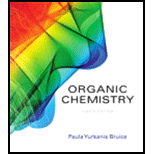
Concept explainers
(a)
Interpretation:
The representation of the given structure has to be identified as identical compounds or pair of enantiomers.
Concept introduction:
The pair of Enantiomers has different configurations.
Enantiomers are named by following Cahn-Ingold-Prelog system, in which R or S letter is used to differentiate between enantiomers.
According to Cahn-Ingold-Prelog system,
The group attached to asymmetric center should be ranked based on the
Check the direction of arrow drawn in the direction of decreasing priority. If the arrow points clockwise direction, then the compound has R configuration. If the arrow points counterclockwise direction, then the compound has S configuration. If the group with lowest priority is not bonded by a hatched wedge, then interchange this group (lowest priority) by group bonded to hatched wedge and draw the arrow in priority order but the configuration is assigned as just reverse.
(b)
Interpretation:
The representation of the given structure has to be identified as identical compounds or pair of enantiomers.
Concept introduction:
The pair of Enantiomers has different configurations.
Enantiomers are named by following Cahn-Ingold-Prelog system, in which R or S letter is used to differentiate between enantiomers.
According to Cahn-Ingold-Prelog system,
The group attached to asymmetric center should be ranked based on the atomic number of atom which directly connected to asymmetric center. The higher the atomic number of atom, higher the priority. If there is tie, then consider the next atoms attached to the connected atom and so on.
Check the direction of arrow drawn in the direction of decreasing priority. If the arrow points clockwise direction, then the compound has R configuration. If the arrow points counterclockwise direction, then the compound has S configuration. If the group with lowest priority is not bonded by a hatched wedge, then interchange this group (lowest priority) by group bonded to hatched wedge and draw the arrow in priority order but the configuration is assigned as just reverse.
(c)
Interpretation:
The representation of the given structure has to be identified as identical compounds or pair of enantiomers.
Concept introduction:
The pair of Enantiomers has different configurations.
Enantiomers are named by following Cahn-Ingold-Prelog system, in which R or S letter is used to differentiate between enantiomers.
According to Cahn-Ingold-Prelog system,
The group attached to asymmetric center should be ranked based on the atomic number of atom which directly connected to asymmetric center. The higher the atomic number of atom, higher the priority. If there is tie, then consider the next atoms attached to the connected atom and so on.
Check the direction of arrow drawn in the direction of decreasing priority. If the arrow points clockwise direction, then the compound has R configuration. If the arrow points counterclockwise direction, then the compound has S configuration. If the group with lowest priority is not bonded by a hatched wedge, then interchange this group (lowest priority) by group bonded to hatched wedge and draw the arrow in priority order but the configuration is assigned as just reverse.
(d)
Interpretation:
The representation of the given structure has to be identified as identical compounds or pair of enantiomers.
Concept introduction:
The pair of Enantiomers has different configurations.
Enantiomers are named by following Cahn-Ingold-Prelog system, in which R or S letter is used to differentiate between enantiomers.
According to Cahn-Ingold-Prelog system,
The group attached to asymmetric center should be ranked based on the atomic number of atom which directly connected to asymmetric center. The higher the atomic number of atom, higher the priority. If there is tie, then consider the next atoms attached to the connected atom and so on.
Check the direction of arrow drawn in the direction of decreasing priority. If the arrow points clockwise direction, then the compound has R configuration. If the arrow points counterclockwise direction, then the compound has S configuration. If the group with lowest priority is not bonded by a hatched wedge, then interchange this group (lowest priority) by group bonded to hatched wedge and draw the arrow in priority order but the configuration is assigned as just reverse.
Want to see the full answer?
Check out a sample textbook solution
Chapter 4 Solutions
Organic Chemistry; Organic Chemistry Study Guide A Format: Kit/package/shrinkwrap

 Organic And Biological ChemistryChemistryISBN:9781305081079Author:STOKER, H. Stephen (howard Stephen)Publisher:Cengage Learning,
Organic And Biological ChemistryChemistryISBN:9781305081079Author:STOKER, H. Stephen (howard Stephen)Publisher:Cengage Learning, General, Organic, and Biological ChemistryChemistryISBN:9781285853918Author:H. Stephen StokerPublisher:Cengage Learning
General, Organic, and Biological ChemistryChemistryISBN:9781285853918Author:H. Stephen StokerPublisher:Cengage Learning Organic Chemistry: A Guided InquiryChemistryISBN:9780618974122Author:Andrei StraumanisPublisher:Cengage Learning
Organic Chemistry: A Guided InquiryChemistryISBN:9780618974122Author:Andrei StraumanisPublisher:Cengage Learning



